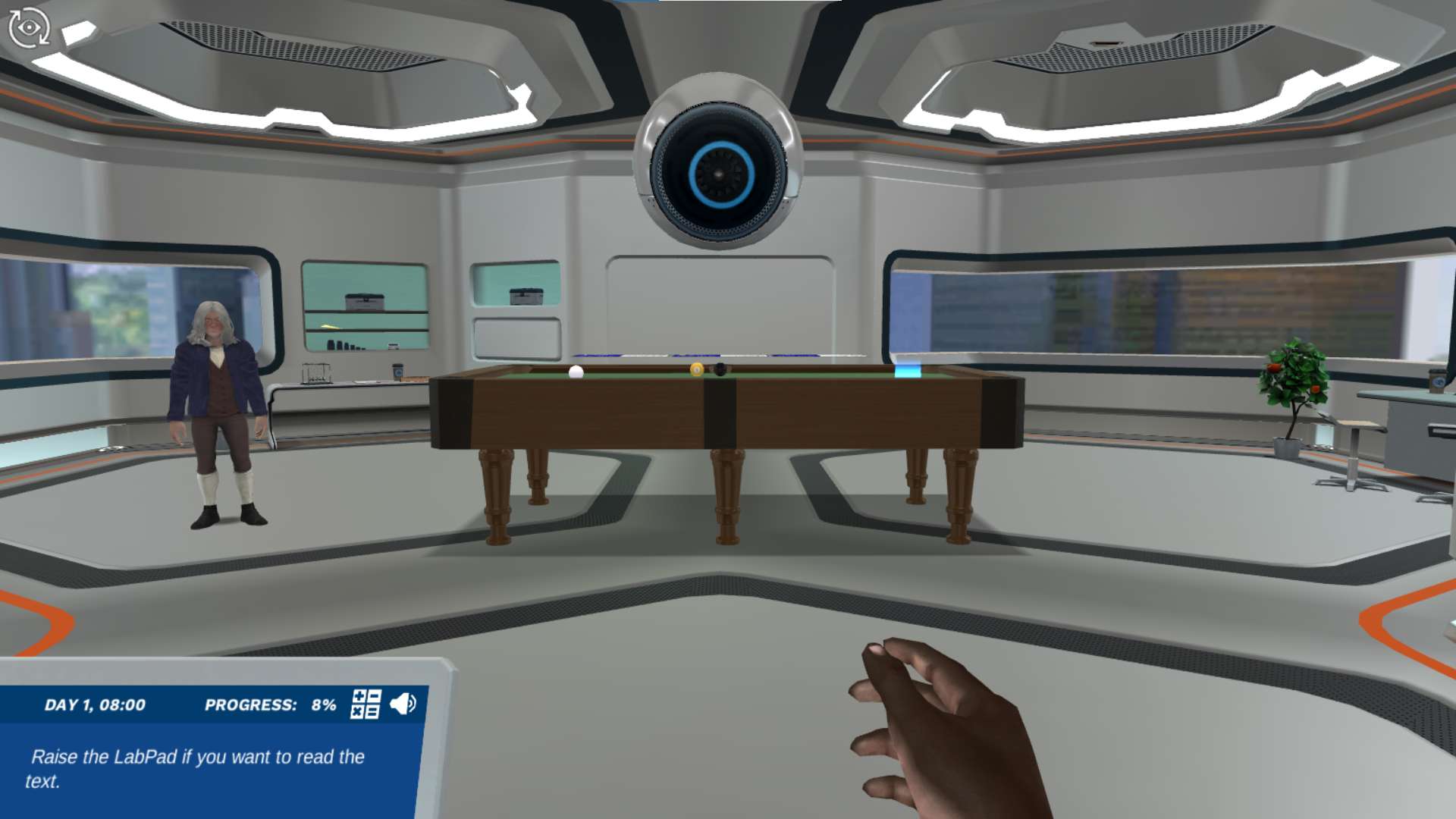Heading 1
Heading 2
Heading 3
Heading 4
Heading 5
Heading 6
Lorem ipsum dolor sit amet, consectetur adipiscing elit, sed do eiusmod tempor incididunt ut labore et dolore magna aliqua. Ut enim ad minim veniam, quis nostrud exercitation ullamco laboris nisi ut aliquip ex ea commodo consequat. Duis aute irure dolor in reprehenderit in voluptate velit esse cillum dolore eu fugiat nulla pariatur.
Block quote
Ordered list
- Item 1
- Item 2
- Item 3
Unordered list
- Item A
- Item B
- Item C
Bold text
Emphasis
Superscript
Subscript
About This Simulation
Join Dr. One and Isaac Newton at the pool table to learn about momentum conservation and elastic and inelastic collisions.
Learning Objectives
- Apply the momentum equation to calculate total momentum before collision events and velocities of objects after collisions
- Experimentally demonstrate the conservation of momentum
- Differentiate between examples of inelastic and elastic collisions
About This Simulation
Lab Techniques
- Collisions
- Momentum
- Linear momentum
- Momentum conservation
- Energy
- Kinetic energy
- Elastic/Inelastic collision
- Completely inelastic collision
- Energy conservation
Related Standards
- HS-PS1
- PS1A
- PS1B
- Physics C: Mechanics Unit 4.3
- Physics 2 Unit 2.8
- Physics 2 Unit 2.9
Learn More About This Simulation
Brace for impact! In this simulation, you will learn how to use momentum conservation to predict the outcome of a collision, and demonstrate how momentum is conserved in elastic and inelastic collisions.
Help Newton improve his pool
Isaac Newton is a great physicist, but he still has plenty to learn as a pool player. Students will help Newton apply his knowledge of momentum conservation, kinetic energy, and elastic and inelastic collisions to improve his pool skills. After finding out about the elements of energy and momentum conservation in collisions, students will solve puzzles that allow them to demonstrate momentum conservation and prove their knowledge of the topic.
Trigger collisions between billiard balls
Students will produce collisions between balls with different properties in a wide range of scenarios. These include balls that produce elastic collisions, balls that produce completely inelastic collisions, and balls that have different masses, materials, and initial velocities.
The parameters of the collision, including mass, velocity, and momentum of each ball are displayed in real time, allowing the student to observe the conservation of total momentum in each collision.
The student is presented with a sequence of scenarios that increasingly build complexity and skill, starting from observation and culminating in informed decision-making in which the student will apply their newly acquired knowledge on momentum conservation.
Solve puzzles about momentum conservation
In the end, you will apply your knowledge of momentum conservation and elastic and inelastic collisions to produce collisions and solve puzzles. Will you run the table in this match?
For Science Programs Providing a Learning Advantage
Boost STEM Pass Rates
Boost Learning with Fun
75% of students show high engagement and improved grades with Labster
Discover Simulations That Match Your Syllabus
Easily bolster your learning objectives with relevant, interactive content
Place Students in the Shoes of Real Scientists
Practice a lab procedure or visualize theory through narrative-driven scenarios


FAQs
Find answers to frequently asked questions.
Heading 1
Heading 2
Heading 3
Heading 4
Heading 5
Heading 6
Lorem ipsum dolor sit amet, consectetur adipiscing elit, sed do eiusmod tempor incididunt ut labore et dolore magna aliqua. Ut enim ad minim veniam, quis nostrud exercitation ullamco laboris nisi ut aliquip ex ea commodo consequat. Duis aute irure dolor in reprehenderit in voluptate velit esse cillum dolore eu fugiat nulla pariatur.
Block quote
Ordered list
- Item 1
- Item 2
- Item 3
Unordered list
- Item A
- Item B
- Item C
Bold text
Emphasis
Superscript
Subscript
A Labster virtual lab is an interactive, multimedia assignment that students access right from their computers. Many Labster virtual labs prepare students for success in college by introducing foundational knowledge using multimedia visualizations that make it easier to understand complex concepts. Other Labster virtual labs prepare learners for careers in STEM labs by giving them realistic practice on lab techniques and procedures.
Labster’s virtual lab simulations are created by scientists and designed to maximize engagement and interactivity. Unlike watching a video or reading a textbook, Labster virtual labs are interactive. To make progress, students must think critically and solve a real-world problem. We believe that learning by doing makes STEM stick.
Yes, Labster is compatible with all major LMS (Learning Management Systems) including Blackboard, Canvas, D2L, Moodle, and many others. Students can access Labster like any other assignment. If your institution does not choose an LMS integration, students will log into Labster’s Course Manager once they have an account created. Your institution will decide which is the best access method.
Labster is available for purchase by instructors, faculty, and administrators at education institutions. Purchasing our starter package, Labster Explorer, can be done using a credit card if you are located in the USA, Canada, or Mexico. If you are outside of North America or are choosing a higher plan, please speak with a Labster sales representative. Compare plans.
Labster supports a wide range of STEM courses at the high school, college, and university level across fields in biology, chemistry, physics, and health sciences. You can identify topics for your courses by searching our Content Catalog.















